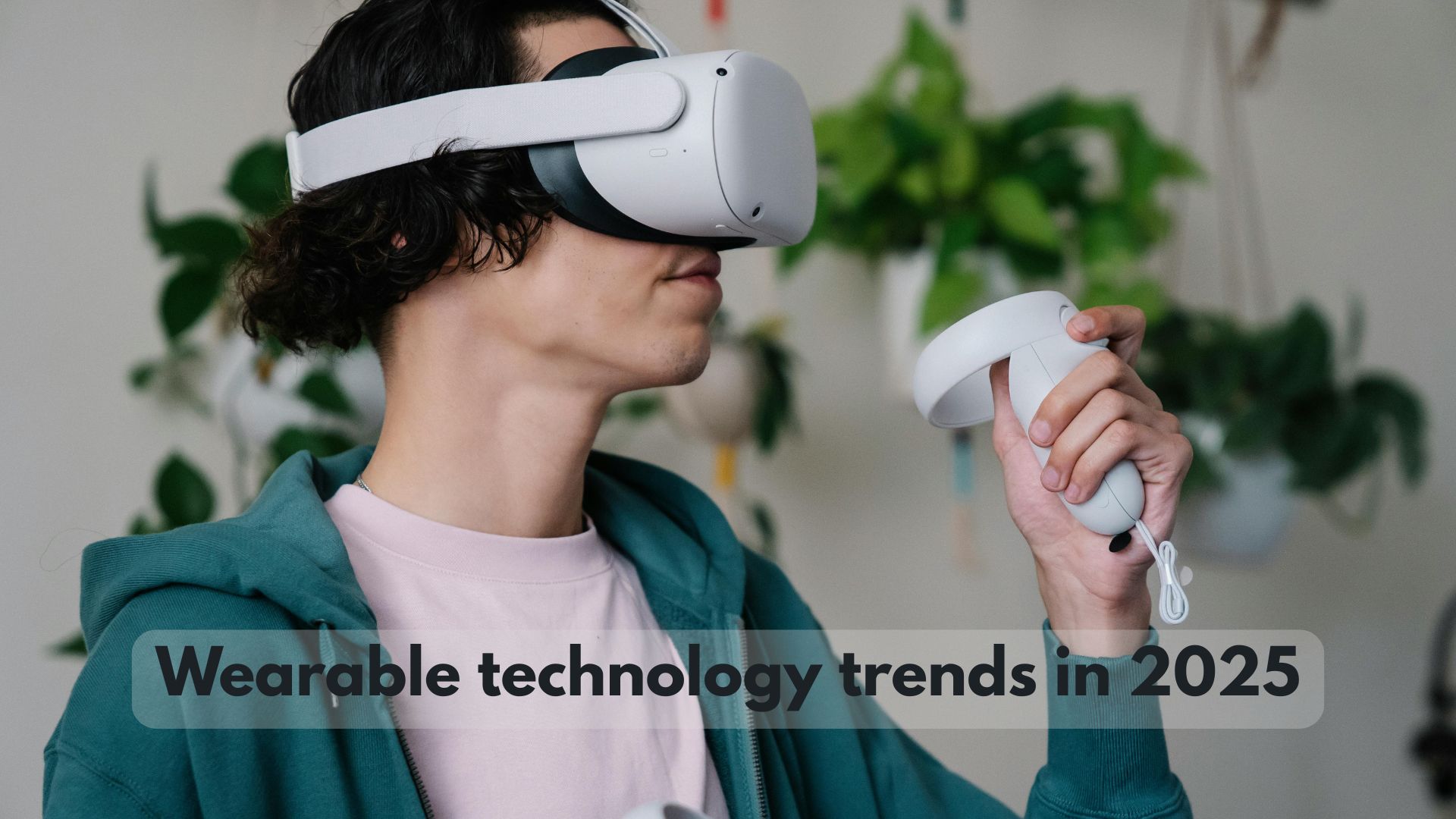-
Wearable Technology Trends in 2025: What’s Shaping the Future?
In 2025, wearable technology is more than just smartwatches and fitness bands—it’s an integral part of healthcare, productivity, fashion, and daily life. As artificial intelligence (AI), sensors, and connectivity become more advanced, wearable tech is poised to redefine how we interact with our environment and monitor our well-being.
This article explores the latest wearable technology trends for 2025, highlighting how these innovations are changing industries and enhancing user experiences.
Why Wearable Tech Matters in 2025 🧠
Wearables are no longer niche gadgets. They are now critical tools for:
-
Health monitoring and early diagnosis
-
Hands-free communication
-
Workplace safety and productivity
-
Enhanced personal security
-
Immersive experiences (AR/VR)
According to Statista, the number of connected wearable devices is projected to exceed 1.4 billion by the end of 2025, up from just 325 million in 2016.
Top Wearable Tech Trends in 2025
1. Health-Focused Wearables Are Getting Smarter 🩺
Health remains the biggest driver of wearable tech innovation. In 2025, wearable devices go beyond counting steps and heartbeats. They now offer:
-
Continuous glucose monitoring (CGM) for diabetics
-
Blood pressure and oxygen saturation tracking
-
Cardiac arrhythmia detection using AI algorithms
-
Mental health monitoring through cortisol sensors and HRV (heart rate variability) tracking
🆕 Trend Spotlight: Companies like Withings, Apple, and Fitbit are developing wearables capable of detecting early signs of chronic illnesses such as Parkinson’s or sleep apnea.
➡️ Related Read: How Tech is Transforming Healthcare – Vounesy
2. AI-Driven Personal Assistants in Wearables 🤖
AI is making wearables more intuitive and proactive. In 2025, wearables can:
-
Suggest personalized workouts and diets
-
Alert users to stress spikes and recommend breathing exercises
-
Use contextual awareness (e.g., calendar, location, biometrics) to adapt to your needs in real-time
Smart rings, earbuds, and watches now act as on-the-go personal health and productivity coaches, constantly learning from your behavior.
3. Wearables for Workplace Safety & Productivity 🦺
In sectors like manufacturing, logistics, and construction, wearables are being deployed for real-time tracking and worker safety.
Key innovations include:
-
Smart helmets with augmented reality (AR) overlays
-
Exoskeletons that reduce physical strain
-
Wearable sensors that detect fatigue, exposure to toxic gases, or improper posture
Companies like RealWear and Ekso Bionics are leading the charge in workplace-focused wearable solutions.
➡️ Explore: Industrial Automation Trends – Vounesy
4. Advanced Biometric Security 🔐
As cyber threats grow, wearables are playing a role in multi-factor authentication and identity verification.
Examples of biometric innovations:
-
EEG and ECG-based user identification
-
Vein pattern scanning through smartwatches
-
Voice and gait recognition via smart earbuds
Wearables make security more seamless and context-aware—ideal for banking, enterprise systems, and IoT device access.
5. Sustainable and Eco-Friendly Designs 🌱
Environmental sustainability is a growing concern in 2025. Many wearable manufacturers are:
-
Using biodegradable or recyclable materials
-
Designing modular components for easier repairs
-
Reducing battery consumption through low-power chipsets and solar charging
Consumers now expect their tech to be both smart and eco-conscious.
6. Fashion-Tech Fusion 👗
Wearables are no longer just functional—they’re fashionable.
Emerging trends include:
-
Smart clothing that adjusts insulation based on weather
-
E-textiles that change color or texture dynamically
-
Jewelry-based wearables offering discreet notifications and health tracking
Brands like LVMH, Samsung, and Oura are blending fashion and function to appeal to style-conscious consumers.
7. AR & VR Wearables for Immersive Experiences 🕶️
Thanks to 5G and edge computing, wearable devices are becoming more powerful tools for immersive interaction.
Key innovations:
-
Lightweight AR glasses for real-time translation and navigation
-
VR headsets for remote training, therapy, and virtual tourism
-
Mixed reality wearables for collaborative design and education
These technologies are becoming staples in healthcare, gaming, education, and enterprise environments.
➡️ See Also: The Impact of 5G on Mobile Networks – Vounesy
8. Smart Rings and Minimalist Devices 💍
2025 is witnessing a shift toward discreet and minimalist wearables.
Smart rings like Oura and Ultrahuman Ring AIR are gaining popularity for their:
-
Sleep tracking accuracy
-
Heart rate and body temperature sensing
-
Long battery life and elegant design
These compact devices are ideal for users who want powerful insights without the bulk of a smartwatch.
9. Wearables for Women’s Health 💕
Specialized wearables for tracking menstrual cycles, fertility windows, and hormonal changes are rapidly evolving.
Notable advancements:
-
Skin-worn patches that monitor hormone levels
-
Smart bras for posture and breast health tracking
-
Ovulation prediction using skin temperature and heart rate
Women’s health tech is a booming sector, filling a previously underserved market segment.
10. Integration with Smart Ecosystems 🌐
Wearables in 2025 are deeply integrated with:
-
Smart home systems (e.g., adjusting lights based on mood or health)
-
Voice assistants for hands-free controls
-
Connected cars for unlocking and driver monitoring
This makes wearables the central hub of personal digital ecosystems.
Challenges Ahead ⚠️
While wearables are thriving, they’re not without issues:
Challenge Description ⚖️ Data privacy Users share sensitive health data with tech companies 🔋 Battery life High-performance sensors drain power quickly 🎛️ User interface Smaller screens make interaction difficult 💲 Cost & accessibility Premium features often come at a high price Overcoming these challenges will be essential for sustainable growth and user trust.
Final Thoughts 🎯
In 2025, wearable technology is no longer a novelty—it’s an essential part of how people live, work, and stay healthy. From AI-driven health tracking to AR-powered enterprise tools, wearables are pushing the boundaries of what’s possible.
As innovation continues, wearables will become even more personalized, intuitive, and embedded in our daily lives. For consumers, professionals, and businesses alike, staying informed about these trends is key to leveraging wearable tech to its fullest potential.
Explore More on Wearables
-
